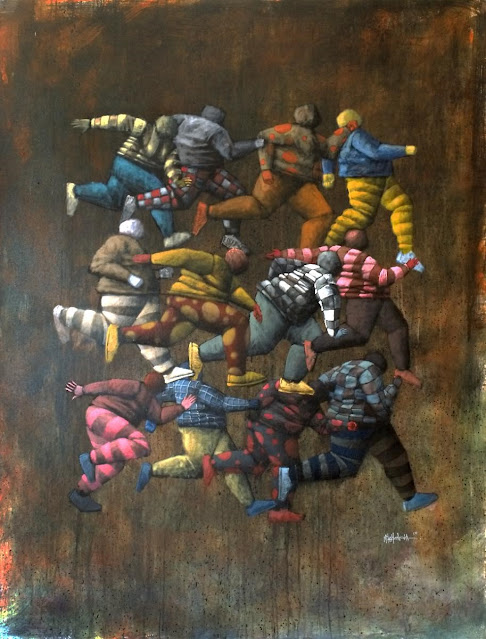A TALE OF TWO ARTISTS AT ONE OFF
By Margaretta wa GacheruMike
Lecchini and Tums Yeshim are two European artists who, since last Saturday,
October 30th, have solo exhibitions at One Off Gallery.
Both could
be described as ‘accidental artists’ since both were professionally trained in
fields other than fine art. One’s an engineer by training who has been
tinkering with ingenious gadgetry practically all his life. The other’s an
architect whose houses have been described as works of art in their own right.
Both have
worked professionally in their respective fields for some time. Yet the impulse
to express themselves more artistically took them to the point where they are
now showing their best works at One Off.
Both men
have concerns for proportion, balance, precision, and spacial relations in
their art. Yet those concerns are manifest in very different ways by either
artist.
In
Lecchini’s case, he deals with lines, colors, and patterns geometrically, as if
he was working out an analytical equation. His paintings feel like mathematical
constructions in which his rectangles and squares generate a soothing,
harmonizing effect. His color schemes further enhance that calming influence,
given the consistency of his color patterns and his choices to situate specific
hues next to one another.
Yet it’s in
the paintings that he plays with color, often after constructing perpendicular
lines that take shape as grids. It’s there that he ponders which colors to use
in the patterning and color coding of his works.
Tums also
creates his sculptures with mathematical precision. Yet unlike Lecchini who
works exclusively in oils, Tums creates complex sculptures out of found objects
that he’s either picked up over the years from public and private trash sites
or been given by friends who know he’s got eclectic tastes.
Yet his
other pieces more than make up for his missing mobiles. One of the most
stunning is a giant piece of driftwood which has an uncanny resemblance to some
prehistoric precursor to contemporary man. “All I did to him was give him [steel]
feet to stand on,” says Tums whose driftwood Neaderthal stands erect around four
feet tall.
Yet if he
did little to touch up the pristine beauty of the natural wood form, he took
his time designing a miniature metallic globe that he says was the most
precious piece in his show. It wasn’t the most peculiar however. That prize could
easily go to his gold-leafed baboon scull which he’d also found unpainted in
somebody’s dumpster.
The studio
itself is a kind of weekend retreat where the architect decamps and morphs into
the contemplative artist who takes his time allowing his oils paints to work
the magic he loves to see emerge on his canvas.
“I’m quite
stressed throughout the week, but I find painting has a calming effect on me,”
he tells BDLife. But he admits he might never have had this first solo
exhibition if it hadn’t been for his girlfriend Talitha who arranged it all with
One Off curator-director Carol Lees.
In contrast,
it was Lees herself who came to Tums’ workshop-studio at Kitengela Glass Trust
and, seeing his latest set of sculptures, (which he jokingly calls ‘trinkets’)
invited him to have his own one-man exhibition through November 21st.






















